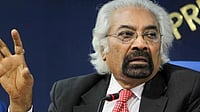
When an economy transforms itself from an agricultural to a non-agricultural, a major restructuring is inevitable. When the government decided to no longer be the largest employer in the organised sector and restructure its own establishments due to cost and productivity considerations, many lost employment, while some found new avenues of employment. Today the market has gone beyond that simple restructuring. It talks of employability and not employment, quality of employment not quantity and creation of employment opportunities as opposed to jobs.
The reformists argue that a father might lose his job but surely his son will get one and for each company that shuts down bowing to competition, another opens up. In the private sector lawful hire-and-fire exists—companies have the confidence to hire and at times over-hire because they know they can downsize if business does not take off. Secondly, even if lifelong employment has ceased to exist for many, salaries have gone up by an average of 10 per cent annually in urban areas. Even the wage rate has risen about 3 per cent in the last five years, which is higher than the increase in the previous ten. According to Planning Commission data, there has also been a 2 per cent rise in rural employment over 1994-2000.
Yet, paradoxically, the unemployment rate is up at 7 per cent or 35 million people. That is also because rural employment is defined as work for a minimum number of days. So even if you are employed for three months in a year, you are recorded as employed, while you might be starving the rest of the year.
While it is true that India is not shining for all, it's equally true that several pockets of the populace have reaped the benefits of job-creating reforms in the past decade. Could 20-year-olds ever dream of earning Rs 10,000 a month a decade ago armed with just an ordinary graduate degree? Would a 30-year-old salaried person have started out on his own without a family business to back him? The opening up of sectors like insurance, banking, telecom and ites together with a retail boom has added a never-before zing to the job market and will to continue to do so in the future.
The next 10 years will be critical in finding a way to integrate the rural workforce into this growth story. Thanks to the highway programme and rapidly prospering cities, the rural population is mobile and able to seek employment outside the farm. Economists feel that there is enough unmet consumption to generate livelihood opportunities for the rural workforce. They will emerge from the rural areas once industries like food processing and telecom together with health services, education and roads come to the villages.
What began in the cities has to reach the villages if we a want happy ending to our employment story.






















